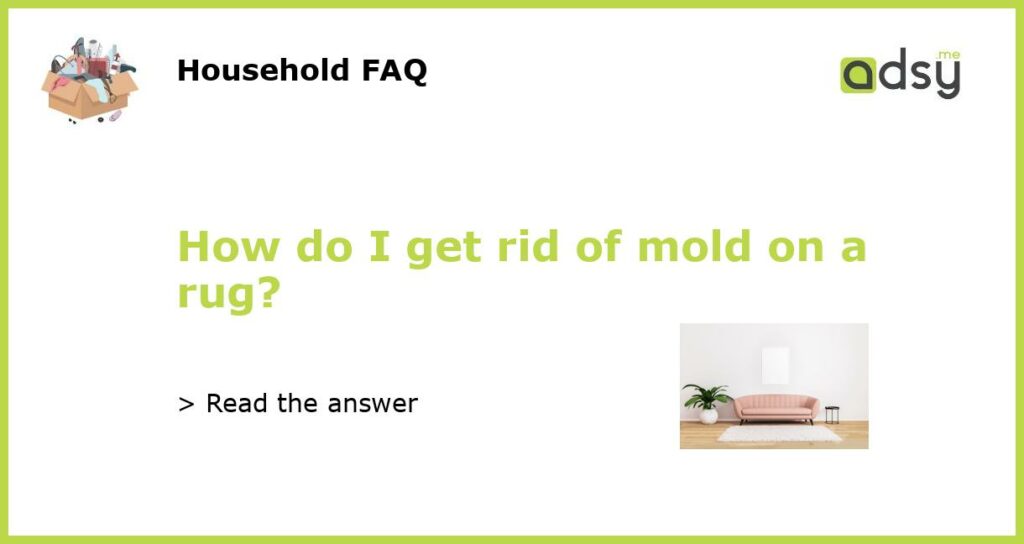Identifying Mold on a Rug
If you suspect that your rug is contaminated with mold, it’s crucial to take immediate action to prevent further spread and potential health risks. Mold proliferates in moist environments, making rugs vulnerable to infestation if not properly cared for. To get rid of mold on a rug, you must first identify the problem.
Removing Surface Mold
If the mold on your rug is still in its early stages and limited to the surface, you can take several steps to remove it. Start by wearing protective gloves, a mask, and eye goggles to prevent any respiratory irritations. Vacuum the rug thoroughly, making sure to capture any loose spores. Next, mix a solution of equal parts water and white vinegar or hydrogen peroxide and apply it to the affected area with a clean cloth or sponge. Gently blot the mold, taking care not to rub it, as this can spread the spores. Allow the area to dry completely before vacuuming again to remove any remaining residue.
Deep Cleaning a Mold-Infested Rug
If the mold has penetrated deep into the rug’s fibers or if the affected area is over 10 square feet, it is recommended to seek professional assistance. Mold remediation experts have the necessary equipment and expertise to handle extensive mold infestations safely and effectively. They will use specialized cleaning solutions, equipment, and techniques to remove the mold and prevent its recurrence.
Preventing Mold in the Future
Once you have successfully eliminated the mold from your rug, it is essential to take preventive measures to avoid its reappearance. Here are some tips to keep your rug mold-free:
- Regularly clean and vacuum: Dirt and debris can trap moisture, providing an ideal environment for mold growth. Vacuum your rug regularly and deep clean it at least once a year.
- Maintain proper air circulation: Use fans or open windows to improve air circulation and reduce humidity levels, especially in areas prone to moisture buildup.
- Control indoor humidity: Keep indoor humidity levels below 60% to discourage mold growth. Consider using dehumidifiers in humid areas.
- Address water leaks promptly: Fix any plumbing or water leaks immediately to prevent moisture from seeping into your rug.
- Avoid placing wet items on the rug: Wet shoes, towels, or other damp items can introduce moisture to your rug, creating a favorable environment for mold. Keep your rug dry at all times.
When to Replace a Mold-Infested Rug
In some cases, mold infestations on rugs may be too severe or deeply ingrained to eliminate completely. If the rug is severely damaged, smells musty even after cleaning, or if you or a family member have allergies or respiratory issues that are triggered by mold exposure, it may be necessary to discard the rug. Rugs made of absorbent materials, such as wool or natural fibers, are more susceptible to mold growth and may need to be replaced if the infestation is severe.






